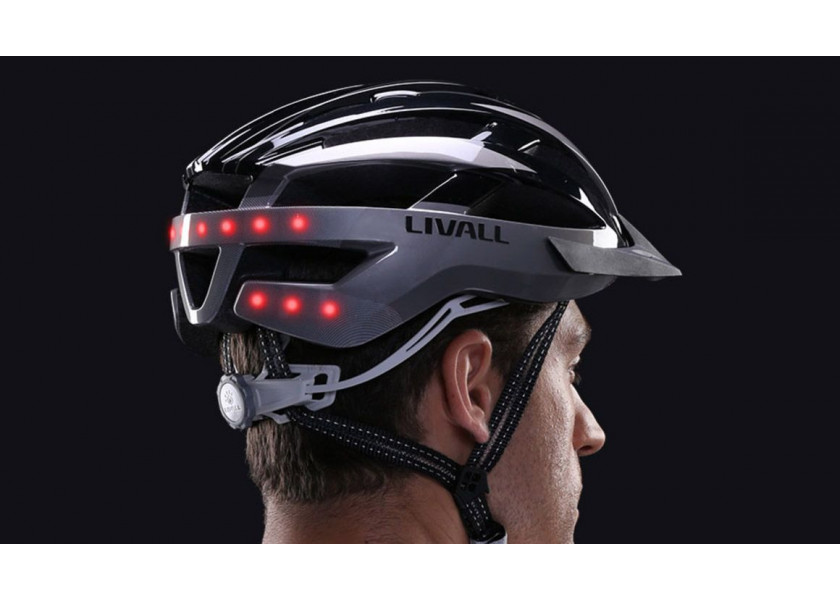
How to choose a amart mountain bike helmet? Key factors to consider
If you're passionate about mountain biking, you know that safety comes first. The rugged terrain, steep descents, and unpredictable conditions require equipment that not only protects you but also helps you stay connected while enjoying the adventure. A smart mountain bike helmet is one of the best options to ensure not only your safety but also top performance.
Why choose a smart mountain bike helmet?
A smart helmet for mountain bikers is much more than just head protection. These helmets are designed with advanced technology that offers a range of features to enhance your biking experience and increase your safety in cycling. These helmets don’t just protect; they also include functionalities like:
- Bluetooth connectivity to answer calls or listen to music while you ride.
- Light systems that improve visibility, especially in low-light conditions.
- Impact sensors that detect falls and send emergency alerts to your trusted contacts.
But how do you know which one is the best for you? Here, we’ll cover the key factors to consider when choosing a smart mountain bike helmet.
Fit and comfort: The key to safety
Proper fit is essential for ensuring both comfort and safety. A helmet that doesn’t fit properly can shift on your head, reducing its effectiveness in case of an accident. Therefore, make sure you choose a helmet that fits well on your head.
Modern smart helmets often come with a dial adjustment system, allowing you to quickly and easily customize the helmet size. It’s also important that the helmet includes an interior padding that provides comfort during long rides.
How to know if the helmet fits well?
- The helmet should be snug without causing discomfort.
- It shouldn’t move forward or backward.
- The strap should fit securely under your chin without being too tight.
Protection and materials
Although smart helmets are known for their technology, don’t forget their primary function: protection. Mountain bike helmets should be made of high-quality materials that absorb impacts and protect your head from serious injuries.
Common materials include:
- EPS (Expanded Polystyrene): This material is lightweight and effective at absorbing impacts.
- MIPS (Multi-directional Impact Protection System): Many smart helmets incorporate this technology, which helps reduce rotational forces during a fall.
In addition to these materials, ensure that the helmet meets international safety standards, such as the CE certification.
Technology and additional features
A smart helmet for mountain biking can include a wide range of features that enhance both your safety and your experience on the road. Some of the most common extras include:
- Integrated lights: Helmets with built-in LED lights provide better visibility, especially when riding at dusk or in low-light conditions. This is crucial for safety in cycling, as it makes you more visible to other cyclists and drivers.
- Bluetooth and connectivity: Thanks to this technology, you can receive notifications, make calls, or listen to music without taking your hands off the handlebars. Additionally, some helmets have built-in speakers that allow you to enjoy music without completely isolating yourself from the surrounding sounds.
- Emergency systems: Some advanced models include sensors that detect falls and automatically send an alert to your emergency contacts.
Ventilation
When mountain biking, especially on long rides or in hot weather, ventilation is crucial. Helmets should allow air circulation to prevent overheating and excessive sweating, which can be uncomfortable and dangerous.
Check that the helmet has strategically placed ventilation holes. This will not only keep you cool but also reduce the risk of dehydration.
Durability and weather resistance
Mountain biking involves exposure to various weather conditions and terrains. A smart helmet must be durable enough to withstand typical biking impacts and the elements. Make sure the helmet is water-resistant and offers good protection against the sun.
Some helmets also include UV protection to safeguard your skin from sun rays, which is especially important when biking in sunny environments.
Helmet weight
The weight of your helmet can significantly affect your comfort during the ride. A heavier helmet may become uncomfortable on long trips, while a lighter one will offer greater agility. However, safety should never be sacrificed for weight.
Look for a helmet that strikes a balance between lightness and protection. Modern technology allows the creation of smart helmets without compromising on safety or comfort.
Safety in cycling comes first
When choosing a smart mountain bike helmet, it’s essential to focus not just on aesthetics or technology but also on safety and comfort. Make sure you select a helmet that fits well, has the necessary protective features, and provides additional functionalities that improve your experience on the trail.
Remember, safety in cycling is paramount. A well-chosen helmet can make the difference between enjoying the ride with complete confidence or facing unnecessary risks.